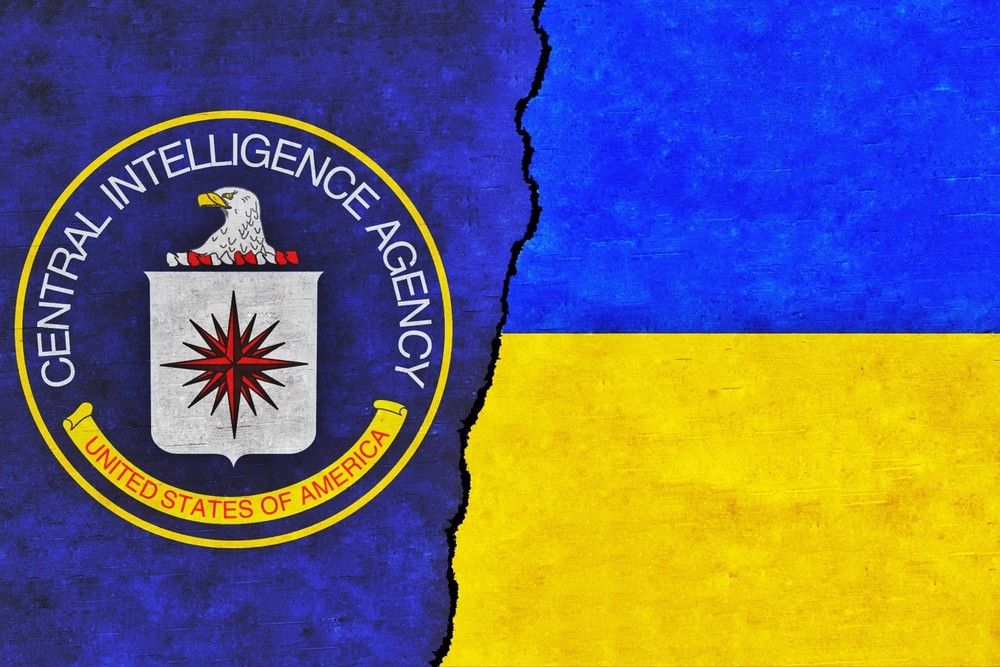
The Central Intelligence Agency is operating in Kyiv and has been for some time, according to new reporting by the New York Times. So, while Biden has insisted on “no U.S. boots on the ground” in Ukraine, there are soft-soled operatives, otherwise known as American spies, providing intelligence and other tactical assistance to Ukraine in its war with Russia.
Sounds like Americans are in this war, like it or not.
The news, based on sourcing from current and former U.S. government officials, is part of a broader report about a “stealthy network” of U.S. and European commandos and spies in “cells” run by the Pentagon’s European Command “to speed allied assistance to Ukrainian troops.” Much of this is operating from military bases in France and Germany and elsewhere. But as the NYT points out, there are European commandos and CIA agents working on the inside.
The commandos are not on the front lines with Ukrainian troops and instead advise from headquarters in other parts of the country or remotely by encrypted communications, according to American and other Western officials, who spoke on the condition of anonymity to discuss operational matters. But the signs of their stealthy logistics, training and intelligence support are tangible on the battlefield.
Several lower-level Ukrainian commanders recently expressed appreciation to the United States for intelligence gleaned from satellite imagery, which they can call up on tablet computers provided by the allies. The tablets run a battlefield mapping app that the Ukrainians use to target and attack Russian troops.
As usual it appears that the administration wants to have it both ways: assure the American people that it is being “restrained” and that we are not “at war” with the Russians, but doing everything but planting a U.S. soldier and a flag inside Ukraine. The CIA, as you will recall, has increasingly had an operational combat focus since 9/11, running elaborate secret prisons overseas, engaging in enhanced interrogations (torture) and manhunting with armed drones and commando teams over the last 20 years. There may be a sliver of daylight between the CIA operatives there today and the U.S. special forces that left Ukraine after Russia invaded, but given the circumstances, is it a meaningful one? Is it all about who is pulling the trigger?
The Russians may not see the distinction and consider this news as further evidence that their war is more with Washington and NATO than with Ukraine. For this and other reasons the NYT report has sparked a heated debate on social media.
What possible value add could the public bring to the debate? They don’t have access to the details or the situational awareness.
— John Sipher (@john_sipher) June 26, 2022
Heer, who is a writer for The Nation, responded to Sipher by saying that military decisions are “subject to civilian oversight,” to which Sipher, whose Twitter profile says he is at the Atlantic Council and is “former CIA Clandestine Service,” quipped, that’s to be done “through elected representatives.”
Right. And I have a bridge to sell you in Fallujah.
Perhaps two percent of Congress through the House and Senate intelligence committees is aware the CIA is operating in Kyiv but like everything — from the 20-year war in Afghanistan to specific operations like the assassination of Qasem Soleimani in 2020 — the whole process has a whiff of retroactive rubberstamping with no room (or interest) for debate in Congress. Operational secrecy and security are no doubt the fig leaf, but when we’re not supposed to be in a war we aren’t supposed to be in a war, right?
“I don’t think people realize that right now the spigot from Congress is fully open. Money, weps, intel, whatever they need,” tweeted Jack Murphy, journalist and Iraq/Afghanistan vet. “The American public is not being appropriately informed about what our government is up to as basically every single op DOD/CIA proposes is getting the green light.”
But then again the CIA acted with impunity through much of its formative years, and it wasn’t until the Church Committee brought all the nastiness to light in the 1970s that the American public was made aware of it. Still, the agency continued to fight bloody proxy wars in places like El Salvador and Nicaragua — and let’s not forget Afghanistan in the 1980s. Are we to believe that there is any more stringent oversight today?
Which brings us to the million dollar question — what do we expect to come from this particular (proxy war) for which the U.S. is engaged well beyond just sending assistance? My Quincy Institute colleague George Beebe, who spent years engaged in Russia analysis for the CIA, wonders if Washington even knows how far it is going here.
“This is reminiscent of the ‘sunk cost’ phenomenon that caused Washington to increase its involvement in Vietnam from a handful of advisors to half a million troops in direct combat,” he tells me.
“In the face of growing Russian success in taking the Donbass, we are doubling down on even more economic sanctions on Russia and deeper U.S. and NATO support for Ukraine. How this is supposed to produce anything beyond an ongoing and very volatile stalemate is very unclear. We seem to have no viable exit plan.”
If history is any guide, we won’t have one, until it’s too late.

